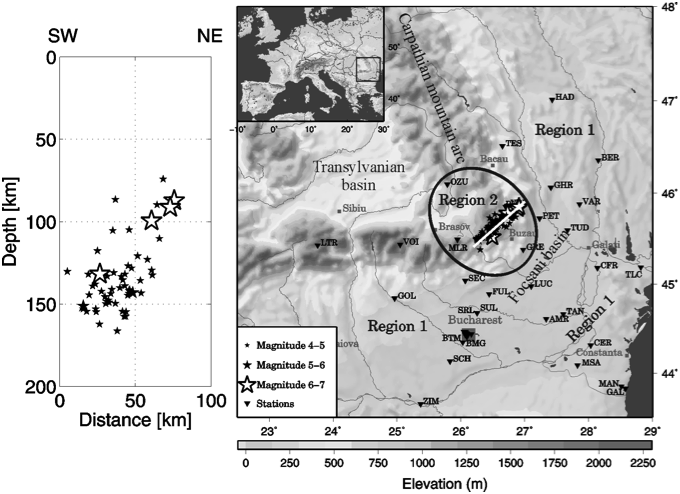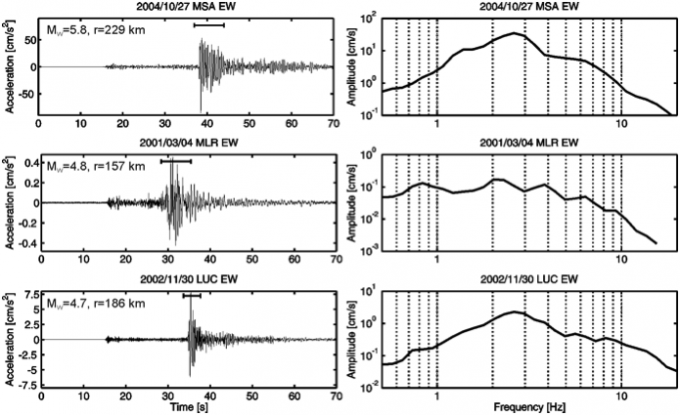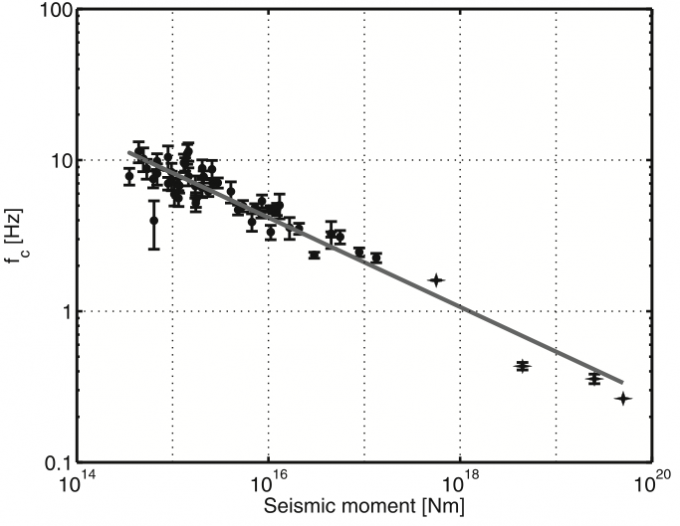Analyzing earthquake ground motions: insights into source characteristics, seismic attenuation and site amplification
Published on Thursday March 04, 2010
The observed ground motion resulting from an earthquake is the convolution of mainly three contributing factors: source, path and site effects. In order to get better insights into earthquake source physics and the attenuation of seismic waves in the Earth’s crust as well as to improve seismic hazard estimates, it is necessary to separate these contributions from each other.
For this purpose, the inversion of ground motion spectra, which is also commonly termed as the generalized inversion technique (GIT), was introduced by Andrews (1986) to separate source spectra and site amplification functions from attenuation-corrected spectra using a priori Q-models. Castro et al. (1990) introduced a two-step approach to invert for the attenuation characteristics of the Earth’s crust as well. Since then, the GIT has been applied in many regions of world (e.g. Parolai et al., 2000, 2004; Bindi et al., 2006) to unravel the frequency-dependence of the attenuation of seismic waves as well as source characteristics and site response.
These and other publications show that the technique generally works well in the case of crustal earthquake datasets. In such a case, the stations are usually well distributed around the earthquake epicenters and vice-versa, i.e. there are many crossing ray paths from sources to stations and inhomogeneities in whole-path attenuation are effectively averaged out. This is however not always the case, as a recent study by Oth et al. (2008, 2009) revealed. They applied the GIT approach to the intermediate-depth earthquakes in the Vrancea region in Romania. Here, frequent and strong earthquakes occur in a very narrow focal volume(Fig. 1 & 2). The epicentral region covers an area of only 30 x 70 km2 and the events take place in a narrow vertical stripe ranging from about 70 to 200 km depth. Oth et al. (2008, 2009) showed that in this case, the GIT formulation must be modified in order to account for lateral variability in attenuation characteristics between different sets of stations (region 1/2 , Fig. 1). Furthermore, the results show that these earthquakes depict high stress drops, leading to a very efficient high frequency radiation of seismic waves (Fig. 3) and, consequently, to a large damage potential of these earthquakes. For more information, we refer the reader to Oth et al. (2008, 2009).



In collaboration with researchers from the German Research Centre for Geosciences (GFZ) at the Helmholtz Centre Potsdam (Germany) and the Istituto Nazionale di Geofisica e Vulcanologia (INGV, Italy), we currently apply the GIT technique to study earthquakes that occurred in Japan during the past 13 years. In Japan, the two accelerometic network K-net and KiK-net provide the largest amount of strong motion data worldwide. These data cover a large range of magnitudes, distances and focal depths and therefore allow us to estimate stable and reliable estimates of source spectra, attenuation properties and site amplification. The retreived source functions will be used for an in-depth study of the source scaling characteristics. Furthermore, all KiK-net stations are additionally equipped with a borehole sensor, allowing for a direct comparison between GIT site amplification functions and the results from consideration of surface/borehole sensor pairs.
Another dataset of interest is the sequence of small earthquakes in Belgium southeast of Brussels, which started in July 2008 and includes earthquakes with magnitudes as small as 0. In collaboration with the Royal Observatory of Belgium (ORB), a spectral study of the ground motions recorded by a mobile network as well as permanent stations in Belgium is underway.
References
- Andrews, D. J. (1986). Objective determination of source parameters and similarity of earthquakes of different size. In Das, S., Boatwright, J., and Scholz, C. H., editors, Earthquake Source Mechanics. American Geophysical Monograph 37, 259-267.
- Castro, R. R., Anderson, J. G., and Singh, S. K. (1990). Site response, attenuation and source spectra of S waves along the Guerrero, Mexico, subduction zone. Bull. Seismol. Soc. Am., 80:1481–1503.
- Bindi, D., Parolai, S., Grosser, H., Milkereit, C., and Karakisa, S. (2006). Crustal attenuation characteristics in Northwestern Turkey in the range from 1 to 10 Hz. Bull Seismol. Soc. Am., 96:200–214.
- Oth, A., S. Parolai, D. Bindi and F. Wenzel (2009). Source spectra and site response from S waves of intermediate-depth Vrancea, Romania, earthquakes. Bull. Seismol. Soc. Am., 99(1), 235-254, doi: 10.1785/0120080059.
- Oth, A., D. Bindi, S. Parolai and F. Wenzel (2008). S-wave attenuation characteristics beneath the Vrancea region in Romania: new insights from the inversion of ground motion spectra. Bull. Seismol. Soc. Am., 98(5), 2482-2497, doi: 10.1785/0120080106.
- Parolai, S., Bindi, D., and Augliera, P. (2000). Application of the generalized inversion technique (GIT) to a microzonation study: numerical simulations and comparison with different site-estimation techniques. Bull. Seismol. Soc. Am., 90:286–297.
- Parolai, S., Bindi, D., Baumbach, M., Grosser, H., Milkereit, C., Karakisa, S., and Zünbül, S. (2004). Comparison of different site response estimation techniques using aftershocks of the 1999 Izmit earthquake. Bull. Seismol. Soc. Am., 94:1096–1108.